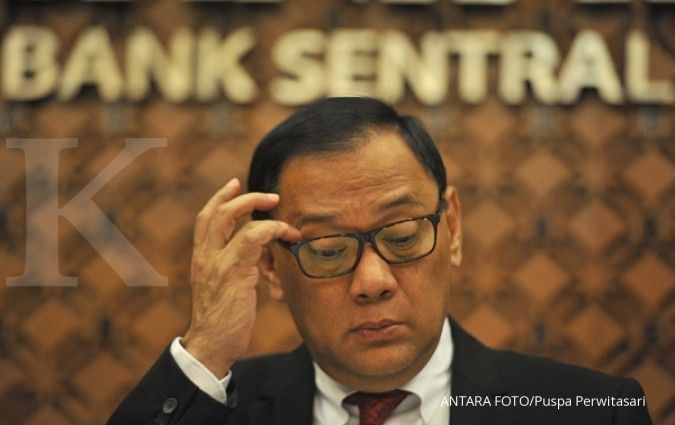JAKARTA. The central bank has played down worries about the rupiah’s depreciation, even as the onshore currency has dropped to above 13,500 per US dollar for the first time in 17 years.
The weakness in the local currency is mostly driven by external factors as the greenback gained strength against almost all currencies worldwide, Bank Indonesia (BI) Senior Deputy Governor Mirza Adityaswara said.
“The rupiah’s weakness should be seen within the global context, because what’s happening right now is a dollar phenomenon,” he told The Jakarta Post on Wednesday via text message.
The Rupiah fell 0.3 percent to close at 13,515 against the dollar on Wednesday, the weakest level since August 1998, according to real-time exchange rates compiled by Bloomberg.
That was after the local Central Statistics Agency (BPS) announced that gross domestic product (GDP) in Southeast Asia’s largest economy further slowed to grow 4.67 percent in the second quarter of this year, the lowest level since 2009.
Like the rupiah, most currencies worldwide on Wednesday also suffered a battering as expectations of US rate hikes in the next Federal Reserve meeting on September acted in favor of the dollar.
The South Korean won slumped 0.7 percent, Malaysian ringgit fell 0.6 percent, Taiwanese dollar dropped 0.4 percent and Philippine peso tumbled 0.3 percent as the US dollar index, which measures the greenback against its basket peers, hit a four-month high.
The rupiah has depreciated by around 8.5 percent year-to-date, the region’s worst performing currency after the ringgit. But Mirza still considered such a performance to be better compared with some other global currencies, pointing to a 10 percent fall in the euro and a 15 percent depreciation in the New Zealand dollar this year.
“When the Fed already hikes its interest rate, the situation will return to normal, with capital inflows once again flowing into emerging markets,” he said. “And that’s the time when the market will notice the improvement in our domestic fundamentals.”
BI has estimated that the current-account deficit, the major factor sparking negative sentiment toward the rupiah, would narrow to 2.5 percent of gross domestic product (GDP) in the second quarter from 4.3 percent in the same period a year earlier.
US-based investment bank Morgan Stanley, which in 2013 classified the rupiah in its “Fragile Five” currencies most vulnerable to outflows due to the sizable current-account deficit, recently said that the Indonesian currency now “has passed the line of infection”.
Commenting on the rupiah’s weakness, Finance Minister Bambang Brodjonegoro said that the currency slump would have minimal impact on the government’s infrastructure projects, although a large fraction of them will use imported goods.
Bambang explained that the fall in most currencies globally was accompanied by the decline in prices for strategic commodities used for infrastructure projects, such as steel, thus lessening the government’s fiscal burden.
Nevertheless, economic stakeholders say that the rupiah depreciation also warrants caution, as it so far has hurt local businesses with high import content.
The manufacturing sector only grew 4.4 percent year-on-year in the second quarter, a slowdown compared to 5 percent in the same period last year, as local businesses felt the pinch of high import costs from the rupiah’s fall, argued Suryamin, the head of the Central Statistics Agency (BPS).
“The exchange rate affects our manufacturing sector because many of our industries still use imported goods for their production input,” he said. (Satria Sambijantoro)
/2011/06/20/759979145p.jpg)










